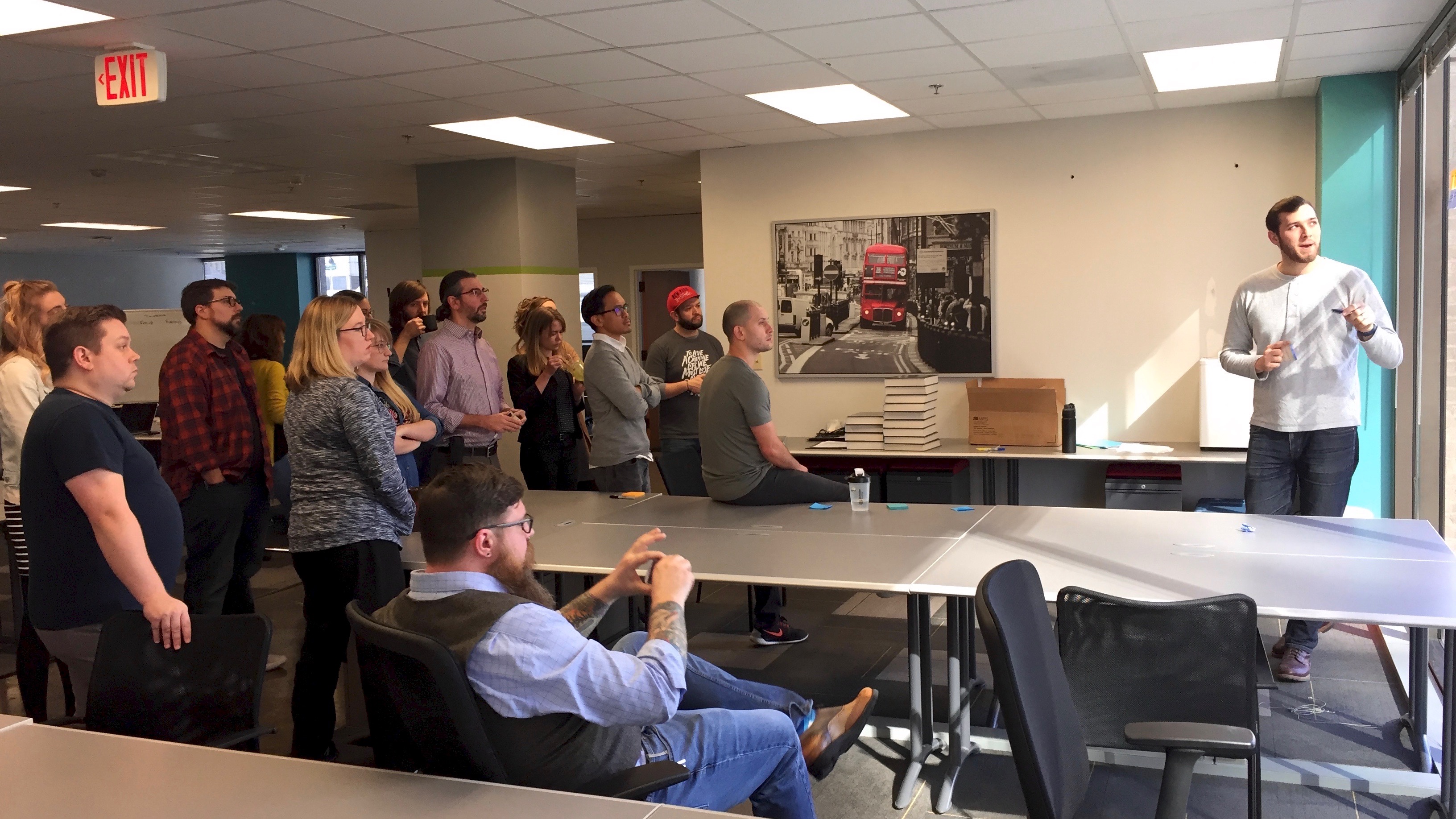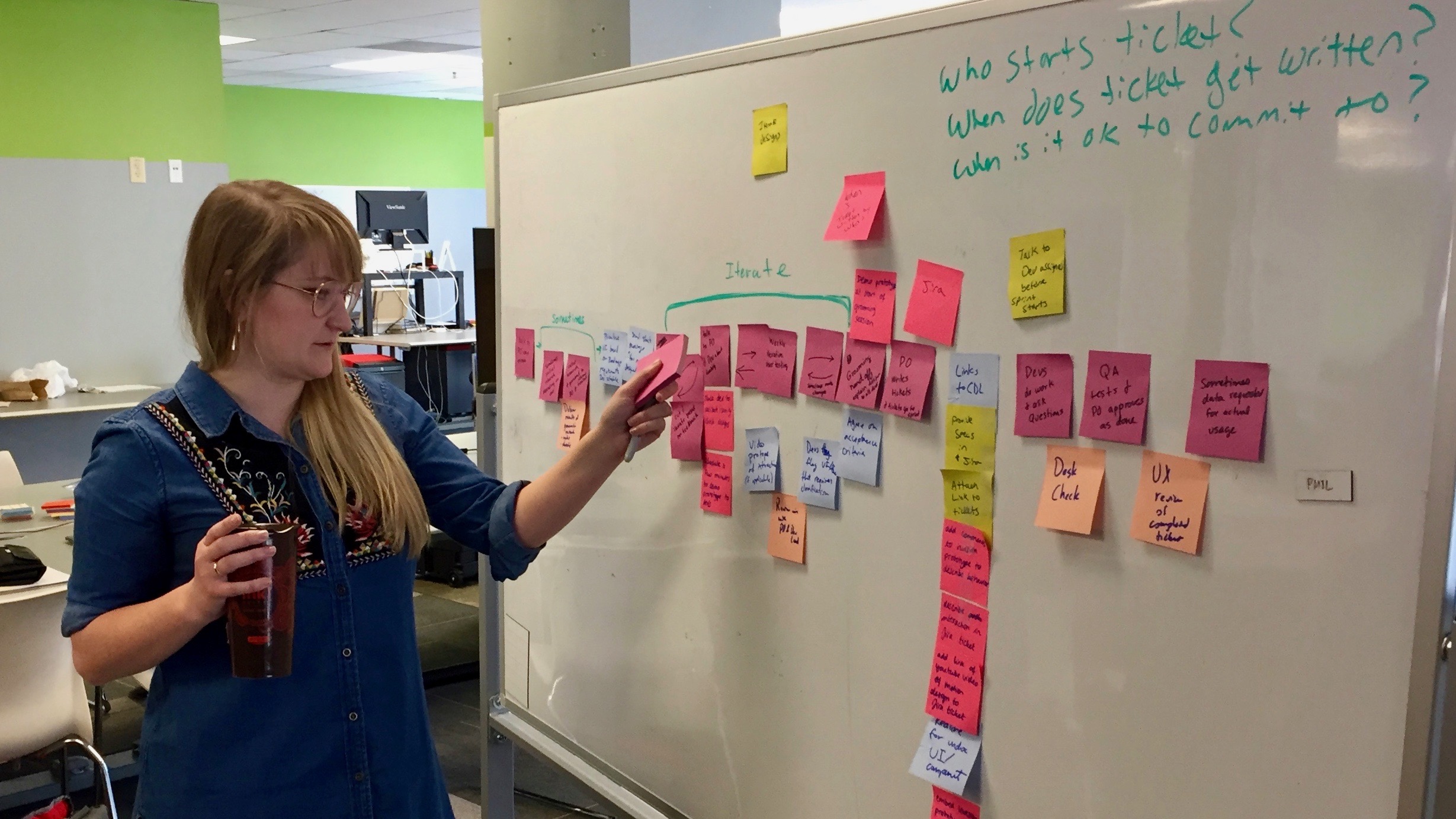What's this DesignOps thing anyway?

If you follow experience or product design you’ve probably heard the term DesignOps or the more abbreviated DesOps lately. For some very specific reasons the term has got a lot of play recently within circles. But just what is DesignOps aside from a snazzy compound word with an inner cap for extra style points?
Why DesignOps?
In recent years many organizations have recognized the value that design brings as a differentiator. Design focuses on creating smooth, efficient, and even delightful experiences for users, leading them to come back to your product for more. Leading companies in various industries are now making significant investments in design to create products that differentiate themselves through a great experience rather than ticking off the boxes from a list of features common to competing products.
For years designers sought for organizations to take seriously the value they could bring to the org. Design teams are now getting the investment they’ve clamored for for years. Now that the spotlight is turning our way it’s time to deliver on and multiply the return on that investment.
We multiply the investment made in us by:
- Increasing the efficiency with which we execute the design process
- Working effectively at scale
- Efficiently communicating with product partners and stakeholders to work from the best information and maintain alignment
- Constantly improving the quality of work that we deliver
DesignOps multiplies design team effectiveness
These are not new concepts but recent discussions in design circles point to novel methods for approaching these needs based on the design process itself. Specifically, DesignOps applies the design process to the methods and processes we use to execute design work.
Every team has a process, whether it’s intentional or grew organically. By applying the design process to the way we work we intentionally create the optimal conditions to do great work.
This can cover a wide range of issues. To briefly list some topics commonly discussed in operationalizing design:
- Design systems
- Design tools (both methods and Sketch, Illustrator, etc.)
- Onboarding new team members
- Hiring
- Intake of new projects
- Establishing success metrics
- Sharing research results across the organization
Design systems specifically has received so much attention the past few years that some I’ve talked with consider it the full breadth of DesignOps. With others it serves as a helpful way to start talking in terms of concrete examples of what DesignOps can do for your team.
There’s many more areas an organization may wish to operationalize their design effort. Dave Malouf provides a more comprehensive list in his article Operationalizing Design Operations.
In talking with peers at other companies I’ve seen varied definitions of DesignOps. Given that it’s the design process applied to design process it comes as little surprise that the best way to apply DesignOps in an organization depends as heavily on the context and needs of the organization as determining the best solution to users’ problems depends on those users’ needs and context.
So just as we do for our users, our first step is to understand the organization’s needs. We’ve found the DesignOps Canvas to be a great tool for assessing where the organization is, where we want to be, and using that information to establish priorities for where to apply our operational attention.
What DesignOps means to us this cycle

Discussion from our most recent round with the DesignOps Canvas led to great perspectives on topics like:
- How we measure the success of our design work
- How we critique work within the team
- How we onboard new employees
- How to best share the results of user research with the rest of the company to facilitate data-driven decision making
- How to better help our product team partners to develop greater understanding of and empathy for user needs
As the team moves forward in our journey we’ll work through these and other areas as we leverage DesignOps to continuously improve our work, improve the team’s experience doing it, improve our ability to work at scale, multiply the impact of our efforts, and thus prove out the value of the investment that Macmillan leadership has made in our team.
Stay tuned for more information as we share what we learn in our DesignOps journey.
Further reading
For further reading on DesignOps and how it can help your organization try some of these resources:
- To see how large design teams organize operations see Adrian Cleave’s DesignOps at Airbnb
- To see examples of perspectives from which to view DesignOps see Dave Malouf’s The different lenses of Design Operations
- For a good look at overall conversation around DesignOps check out the proceedings from DesignOps Summit 2017 – Plan for someone in your team to attend the 2018 event. We’ll be looking for you.